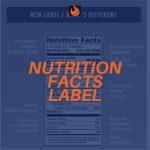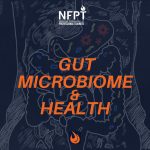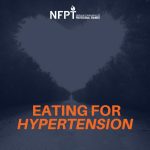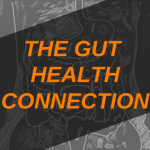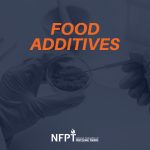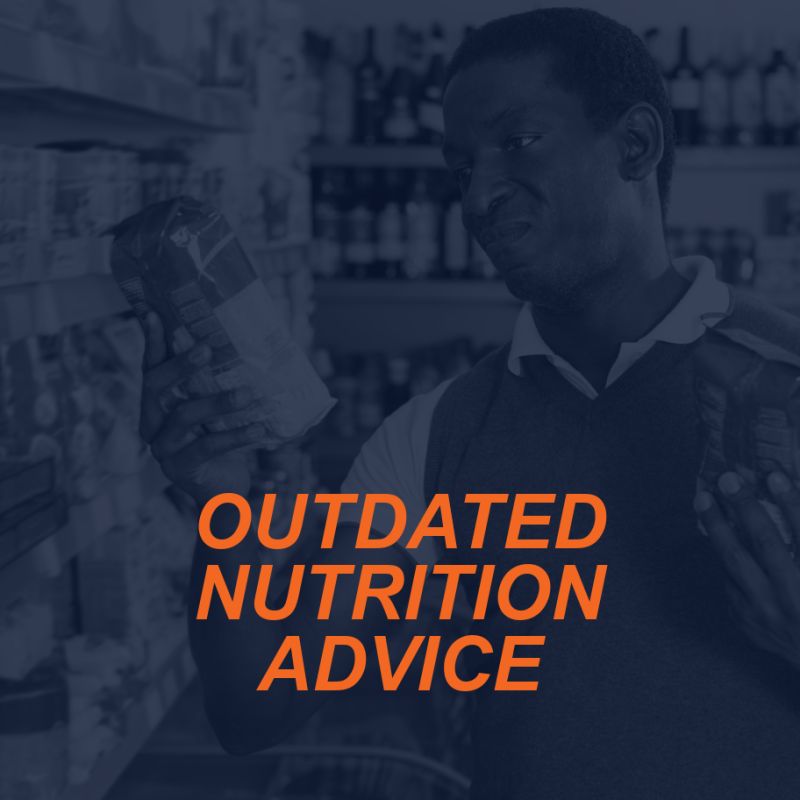
Personal trainers can clearly see how trends in nutrition come and go as swiftly as trends in fashion. A quick internet search or social media scroll will net consumers more “eat this and not that” advice than they can reasonably digest (pun intended). Nutrition, unlike fashion however, is an evidence-based topic. As we learn more, guidelines will naturally shift hopefully making outdated nutrition advice obsolete. But what about the myths that persist?
The issue our clients encounter with online nutrition “advice” from social media or some other ambiguous source include:
a) it doesn’t consider updated evidence or new discoveries
b) it promotes diet culture dogma (or is diet culture dogma)
c) it cherry-picks data and forms a less-than-informed opinion (by an influencer)
d) it just doesn’t make sense.
Check out this compilation of out-of-touch and outdated nutrition advice fitness clients should ignore.
Outdated Nutrition Advice to Take With a Grain of Salt
Ingredients you can’t pronounce are “bad”.
This outdated advice implies that if you don’t know how to say the word or it is not recognizable as English, it must be dangerous or “chemical-ly”. Share with clients that food is made up of chemicals – naturally occurring and/or man-made. Some chemicals are less than desirable to consume while others simply make up the food. Some ingredients are not chemicals but are nutrients such as amino acids, which may show up as odd-looking words to our clients (i.e. phenylalanine, lysine, histidine).
An ingredient list may even list the bioactive components of a banana, which we know is beneficial for our health, but will look like “phenolics, phytosterols”. Help clients evaluate the food for its nutrient benefits and not focus on the oddity of the words in the ingredient list, that aren’t always as undesirable as once implied, and distinguish between food additives and chemical names for benign foods.
Low fat is best if you want to lose fat.
Body fat is not the same as dietary fat found in food. There was a time when the low-fat diet was considered heart-healthy (based on the research at the time), but nutrition has advanced and we now understand its role in storing necessary fat-soluble vitamins, offering sources of pro and anti-inflammatory fatty acids, and the satiating experience we get from consuming the right kinds of fats. Teach clients about the different types of fats and their role in keeping the body healthy.
Only shop the perimeter of the grocery store.
While it’s true, fresh produce and proteins are often located at the perimeter of a store. But there are still healthy and beneficial canned, boxed, and frozen foods in the center of the store in most cases. Offer to take your clients on a grocery store tour to help them identify the best options for them in terms of nutrients and affordability.
A calorie is a calorie.
This is partly true. From a physics standpoint, yes, a calorie is a calorie. If we are in physics class, we are taught that a calorie is the energy needed to increase the temperature of 1 gram of water through 1 °C. Life and food consumption do not occur inside a physics lab (good thing, too!). Not all calories are created equally. For example, a diet of 1500 calories coming from all fried foods is not the same as a 1500-calorie diet made up of high fiber, nutrient-dense foods, and lean proteins.
It is most important to teach clients where calories are coming from, not how they are defined. Further, many factors go into how our fitness clients metabolize the food they eat and the fat they burn; the science isn’t always so simple!
Red meat is unhealthy.
When eaten in balance with other lean proteins and provided the red meat source is also reasonably lean, it does not need to be banished from consumption. Red meat contains iron, zinc, and protein – all nutrients the body needs. What is important to bear in mind is the carcinogenic impact of high-heat cooking on red meat, not the consumption of the meat itself. Marinating or oven-finishing red meat dishes is a way to reduce the chemical reactions associated with searing and barbecuing red meat.
Cholesterol is a ‘no no’.
We need cholesterol. Cholesterol plays an important role in building cells and producing hormones. It also assists in bile production. Teaching clients about the types of cholesterol (LDL, VLDL, and HDL) is a best practice. This way, they can better interpret personal blood lipid profiles and make informed food and lifestyle choices that will best support their health.
Obliterating Outdated Nutrition Advice
Nutrition guidance and guidelines will continue to change as the evidence changes, but there is likely to often be a ‘bad science’ peddler online or on social media networks. Be prepared to address the many myths and misconceptions clients will bring to you and provide them with accurate, sound science that will help them make the best choices for themselves and their health goals.
